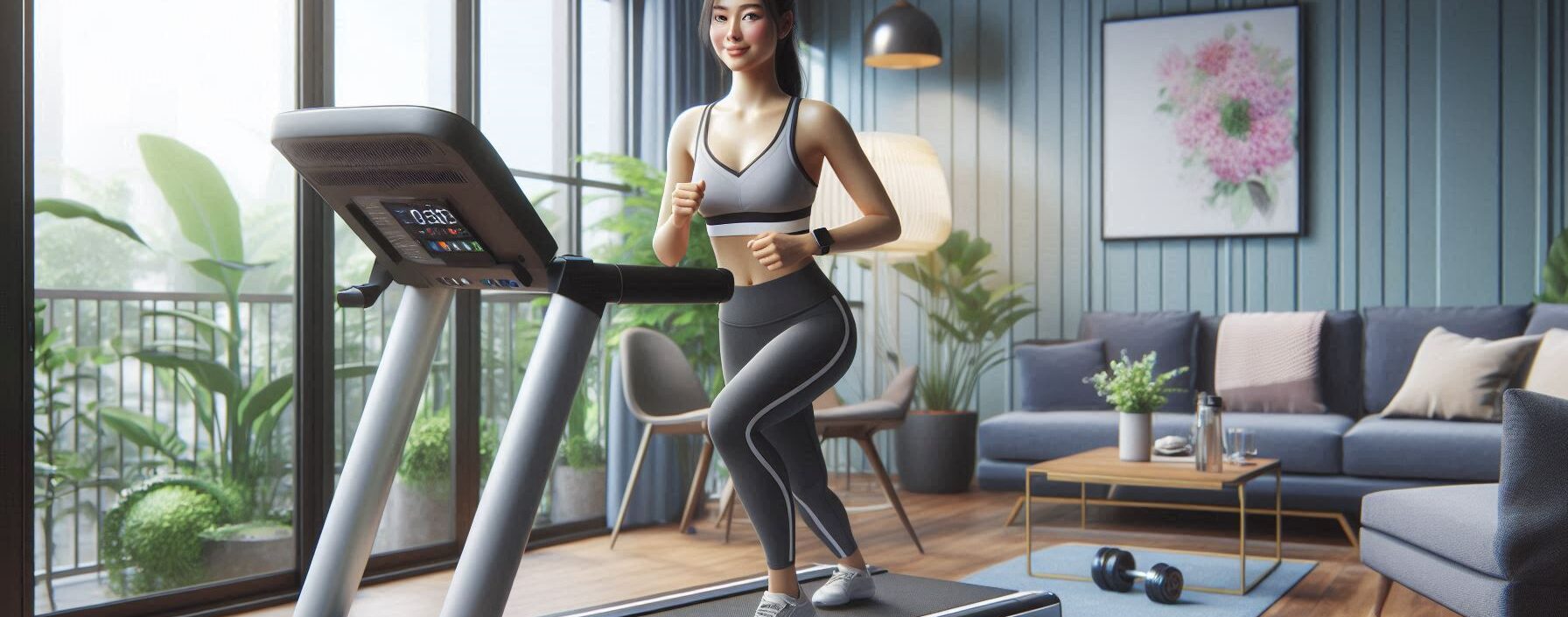
So, you want to get fit but also have a life, right? Enter HIIT—High-Intensity Interval Training. It’s like that friend who shows up at your door with pizza: quick, satisfying, and just what you need when you’re short on time.
HIIT workouts are perfect for squeezing in exercise without sacrificing your precious Netflix binge-watching time. Let’s dive into how you can use HIIT to transform your home workouts from “meh” to “wow!”
Top Takeaways and Key Concepts
Alternate intense effort with short rest periods to burn more calories in less time.
Use simple bodyweight exercises like burpees, squats, and mountain climbers to build HIIT workouts.
Structure short sessions consistently with warm-ups, timed intervals, and repeated circuits.
Stay motivated with music and community to avoid losing focus during home workouts.
Track progress and add variety to prevent boredom and improve fitness over time.
Summary of This Article
This article explains how High-Intensity Interval Training (HIIT) is a fast, efficient way to get fit at home without fancy equipment or long workout sessions. HIIT involves alternating high-energy exercises with short rest periods to boost calorie burn and metabolism. The article shares sample beginner-friendly moves like burpees, jumping jacks, and mountain climbers, along with a simple structure for 20-minute HIIT sessions. It also offers tips to stay motivated using music and online support while emphasizing the importance of tracking progress and mixing up workouts to prevent boredom. The message is clear: HIIT is flexible, powerful, and perfect for busy people—just get started and stay consistent!
Video Summary
Please Note: This post may contain affiliate links. If you click one of them, we may receive a commission at no extra cost to you. As an Amazon Associate, I earn from qualifying purchases.
Shortcuts to Exercise Equipment Shopping at Amazon
Ellipticals - Exercise Bikes - Recumbent Bikes - Treadmills - Rowers
Dumbbells - Resistance Bands - Kettlebells - Benches - Pull-up Bars
1. What is HIIT Anyway?
First off, let’s clear the air about what HIIT actually is. In simple terms, it’s a workout strategy where you alternate between intense bursts of activity and fixed periods of less-intense activity or complete rest. Think of it as sprinting like a cheetah followed by walking like a sloth.
Now, why should you care? Well, research has shown that HIIT can burn more calories in less time compared to traditional steady-state cardio exercises. Plus, it keeps your metabolism revved up long after you’ve finished sweating all over your living room floor—so you’ll still be burning calories while contemplating whether it’s too early for dessert.
2. Why Choose HIIT for Home Workouts?
Let’s see… why choose HIIT? For starters, it requires little to no equipment! You don’t need fancy machines or a gym membership; all you really need is some space—preferably not cluttered with laundry baskets (though I won’t judge if that’s where you’re at).
Another benefit is flexibility. You can tailor your workout around your schedule because each session can last anywhere from 10 to 30 minutes! That means you can squeeze in a workout during a commercial break or while waiting for water to boil (just don’t forget the stove!).
3. Getting Started: Basic Moves
Alright, so how do we actually start this sweaty adventure? Here are some basic moves that work well in any HIIT routine:
1. Jumping Jacks: The classic! A great way to get your heart rate up.
2. Burpees: These lovely creatures combine squats and jumps—it feels like punishment but works wonders!
3. Mountain Climbers: Pretend you’re climbing Mount Everest while staying indoors.
4. High Knees: Run in place but bring those knees up high like you’re trying to impress someone at the gym.
5. Squats: Because who doesn’t love working on their buttocks?
To be fair, these exercises might make you question your life choices halfway through—but hang in there!
4. Structuring Your Workout
Now that we’ve got our moves down let’s talk about structuring the actual workout itself! A typical HIIT session could look something like this:
– Warm-Up (5 minutes): Jumping jacks or jogging in place—nothing too crazy here.
– HIIT Circuit (15-20 minutes):
– Perform each exercise for 30 seconds with maximum effort.
– Rest for 15 seconds before moving on to the next exercise.
– Repeat the circuit three times with one minute of rest between rounds.
Honestly, if I can survive this routine without collapsing into an embarrassing heap of sweat and regret on my living room floor, then so can you!
5. Stay Motivated
I think we can all agree that motivation tends to wane faster than my willpower when cookies are involved—especially when working out at home alone! So how do we keep those spirits high?
One trick is music! Create an energizing playlist filled with songs that make you feel invincible—or at least slightly more motivated than sitting on the couch eating chips.
Also consider joining online communities where people share their progress and support each other; seeing others crush their goals may ignite some friendly competition within yourself!
6. Tracking Progress
Speaking of motivation—tracking progress is crucial! It helps keep accountability levels high and gives insight into improvements over time.
Consider using apps or even good old-fashioned pen-and-paper methods to log workouts and personal bests; nothing feels better than writing down “completed ten burpees” instead of “ate entire pizza.”
And interestingly enough, taking photos along the way can help visualize changes—not just physically but mentally too as fitness becomes part of your lifestyle.
7. Incorporating Variety
Then again, doing the same exercises repeatedly might lead boredom knocking at your door—and nobody wants that kind of company!
Incorporate variety by changing exercises every few weeks or mixing up intervals; try adding new movements or increasing intensity as needed based on how much pizza you’ve consumed lately (ahem).
You could also set themed days—like “Taco Tuesday Toning”—to spice things up further!
Conclusion: Just Get Started!
All things considered, starting a new workout routine—even one as fun as HIIT—can feel daunting at first glance. But remember this golden nugget: perfection isn’t required; consistency is key! Just hit play on those tunes and give it a go—you’ll surprise yourself with what you’re capable of achieving right from home.
Suggested External Resources:
HIIT Workouts You Can Do at Home
https://www.healthline.com/nutrition/hiit-workout-guide
The Ultimate Guide to High Intensity Interval Training
https://www.menshealth.com/fitness/a19546336/high-intensity-interval-training/
How To Start a Successful Home Workout Routine
https://www.shape.com/fitness/tips/how-start-home-workout-routine
Frequently Asked Questions
What makes HIIT different from regular cardio?
HIIT alternates intense effort with short rest periods, which boosts calorie burn faster than steady-state cardio and keeps metabolism elevated after training.
Do I need equipment to do HIIT at home?
No. Most HIIT workouts can be done using simple bodyweight exercises like burpees, squats, and jumping jacks in small spaces.
How long should a typical HIIT workout be?
HIIT sessions are usually 10 to 30 minutes depending on fitness level, exercise intensity, and how many rounds are performed.
Is a warm-up necessary before HIIT?
Yes. A short warm-up helps prepare muscles, reduce injury risk, and improve overall performance during intense intervals.
How do I structure a beginner HIIT routine?
Choose several exercises, perform each with high effort for about 30 seconds, rest briefly, and repeat the circuit for 15 to 20 minutes.
How can I stay motivated to do HIIT at home?
Play energetic music, follow a routine, or join online communities to help maintain accountability and prevent losing interest.
Why should I track progress while doing HIIT?
Tracking reps, times, or circuits helps you see improvement, measure consistency, and adjust difficulty as fitness increases.

Kevin Collier is a passionate fitness expert dedicated to helping individuals achieve their health and wellness goals. With a focus on weight lifting, exercise routines, and effective weight loss strategies, he aims to inspire and motivate others on their fitness journeys. Through evidence-based insights and practical advice, Kevin empowers readers to make informed decisions about their health, encouraging a balanced approach to fitness and overall well-being. Whether you’re a beginner or an experienced athlete, his expertise offers valuable guidance to elevate your fitness game.




